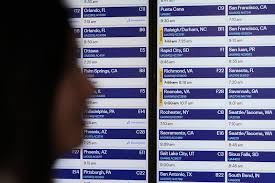
Introduction
The implications of a government shutdown extend far beyond political realms, significantly impacting critical infrastructures, notably airports. As travel plays a crucial role in the economy and connectivity of a nation, understanding the effects of a shutdown on airports is vital for industry stakeholders and travelers alike. During recent shutdowns, logistical challenges emerged, creating a ripple effect throughout air transport systems.
Impact on Airport Operations
When a government shutdown occurs, federal agencies like the Transportation Security Administration (TSA), which oversees airport security, often face staffing shortages due to furloughs. Reports from the last government shutdown in January 2019 illustrated significant delays at numerous airports as TSA agents were required to work without pay or chose to call in sick. This not only frustrated travelers but led to longer wait times at security checkpoints.
During the 2019 shutdown, major airports like Los Angeles (LAX) and New York’s John F. Kennedy International Airport (JFK) reported delays that exceeded normal thresholds. Flight schedules were disrupted, and airlines faced mounting pressures to accommodate passengers, leading to cancellations and delays. The impact on the aviation industry was palpable, with economic losses estimated in the millions during just a few weeks.
Effects on Travel and Revenue
In addition to operational challenges, studies indicated that such disruptions have a broader economic footprint. Airports serve as significant revenue generators, not only through flight operations but also through retail and hospitality sectors located within their confines. A reduction in the number of travelers can negatively affect these businesses, leading to job losses and financial hardships for airport-associated employees.
Future Considerations
As government shutdowns may recur, airports and airlines are advised to develop contingency plans to mitigate disruptions. Increased collaboration among federal agencies, airport authorities, and airline companies could enhance resilience against potential shutdown impacts. If recent patterns repeat, stakeholders must strategize on how to sustain operations amid uncertainties during prolonged shutdowns.
Conclusion
The ramifications of government shutdowns on airports are profound and multi-faceted, affecting security operations, passenger experience, and broader economic factors. Awareness of these challenges is vital for travelers and industry participants. With ongoing discussions regarding the necessity of federal funding and budget approvals, the future of air travel during potential shutdown scenarios remains uncertain. Active engagement and preparation strategies are essential to navigate the implications of government shutdowns on the aviation sector.



